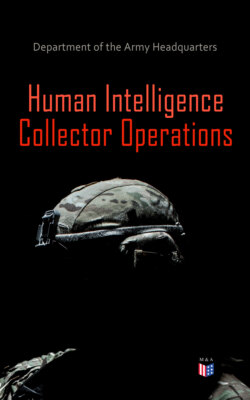Читать книгу Human Intelligence Collector Operations - Department of the Army Headquarters - Страница 57
MILITARY OPERATIONS IN URBAN ENVIRONMENT
Оглавление3-16. Units are often task organized with additional ISR units and assets to meet the detailed collection requirements in the urban operations. The complexities of urban terrain cause degradation in the capabilities of many of the sensor systems. HUMINT collectors may have to be placed in DS of lower echelon combat maneuver forces (battalion and lower) to support operations. HUMINT and combat reporting by units in direct contact with threat forces and local inhabitants becomes the means of collection. For successful ISR planning, the S2 must be aware of the capabilities and limitations of the various organic and attached collection systems as they apply to urban operations. As in all environments, commanders must assess the risk involved in the forward deployment of HUMINT assets.
3-17. In urban operations, people (for example, detainees and civilians) are the preeminent source of information. HUMINT collection provides information not otherwise available through signals intelligence (SIGINT) and imagery intelligence (IMINT) such as threat and local population intentions. They collect information on, for example, floor plans, defensive plans, locations of combatants and noncombatants, including civilians in the buildings and surrounding neighborhoods, and other information. The collected information is passed directly to the individuals conducting the combat operation.
3-18. In small-scale contingencies (SSCs) and in peacetime military engagements (PMEs), contact with local officials and populace by the HUMINT collectors can be a prime source of information about the local environment and is a vital component of intelligence support to force protection. During routine patrolling of urban areas it is often expedient to place a HUMINT collector with individual patrols. The key difference between urban and other operations, from major theater war (MTW) to PME, is the number of HUMINT collectors required. The need for HUMINT collectors is a function of population density. Whereas in a rural environment, a HUMINT team may be able to cover an area in excess of 1,200 square kilometers; the same team in a dense urban environment may be able to cover only 10 square blocks or less.
